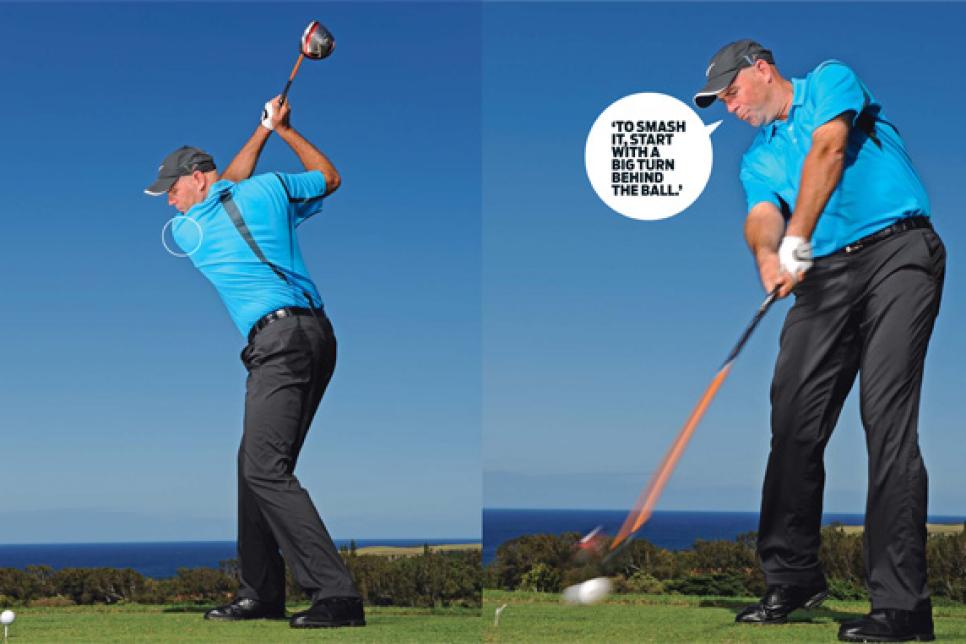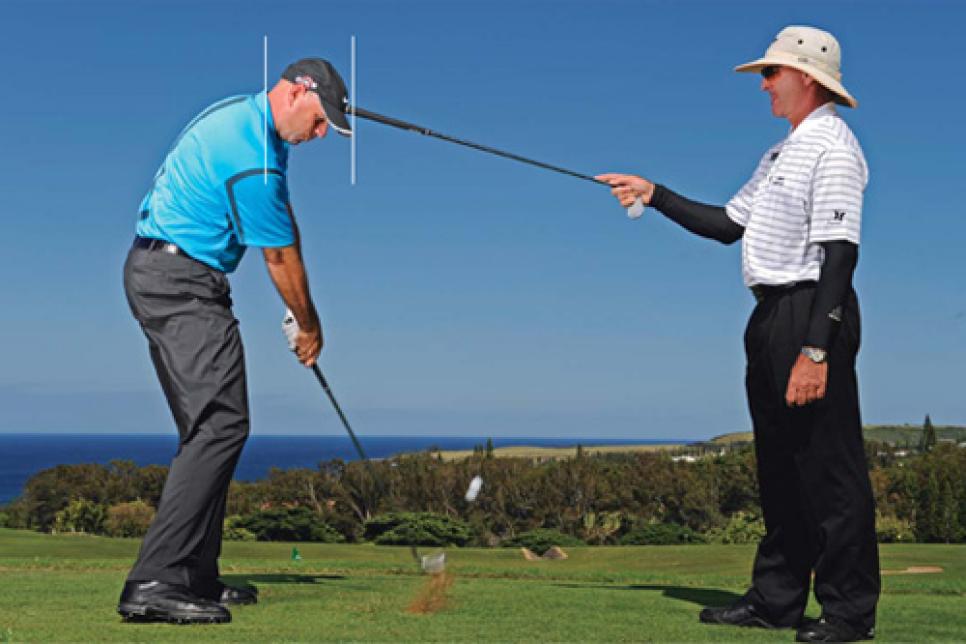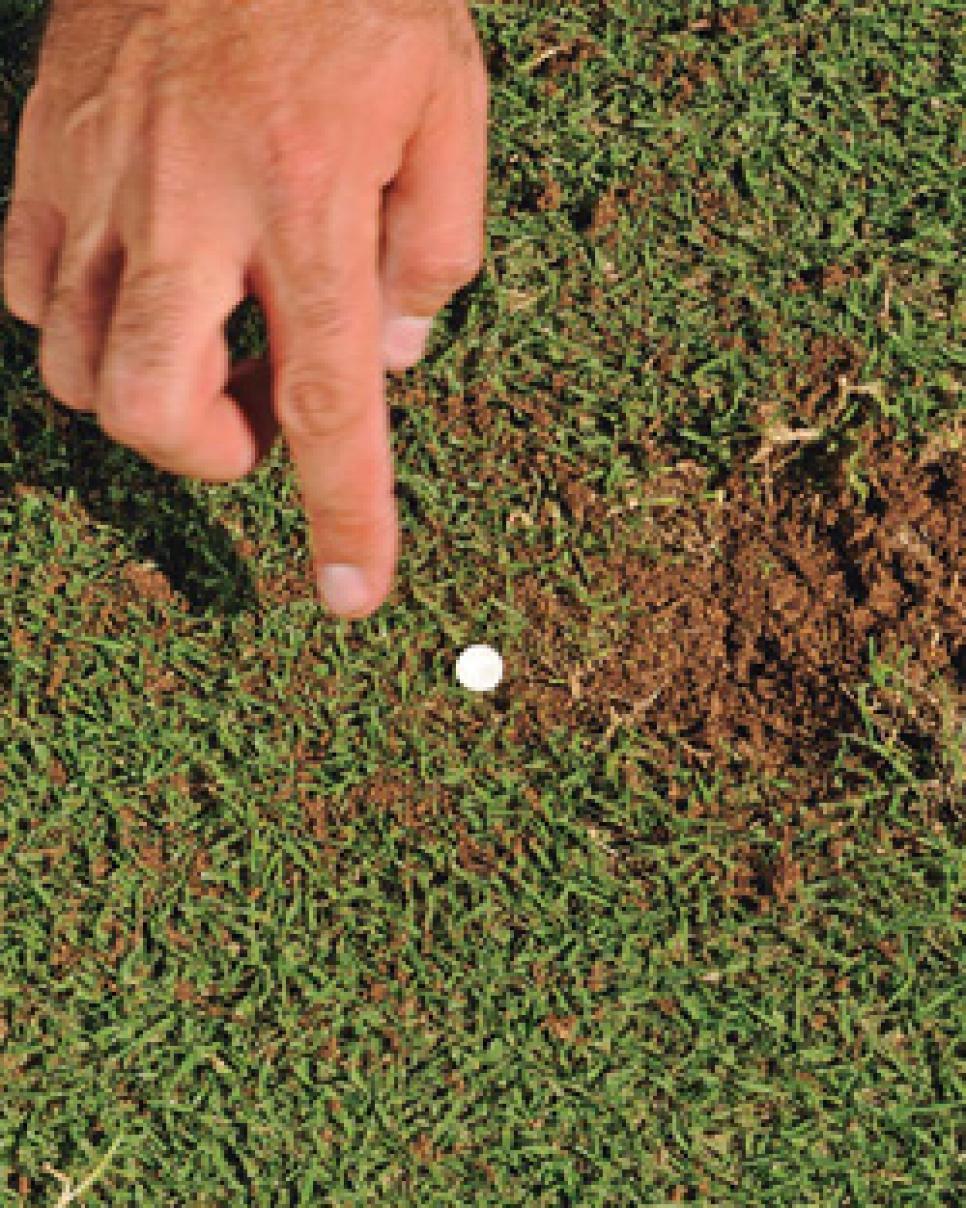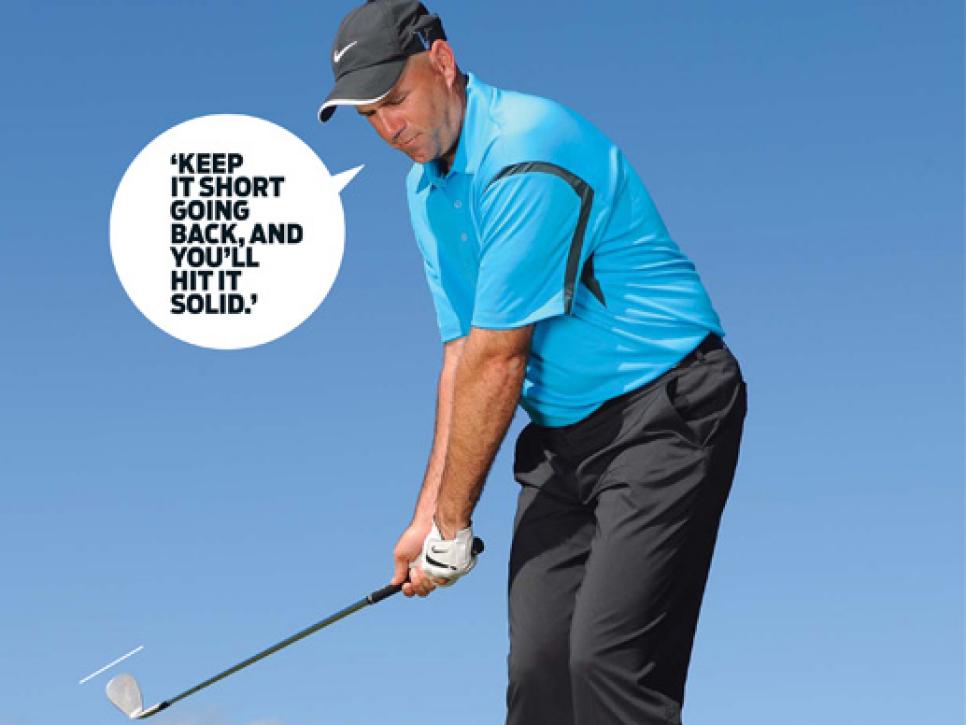Driving
Scoring Shots

Almost every week on the PGA Tour
I play in a pro-am with golfers just like you. I realize most of you can't spend the same amount of time practicing that I do, but there are several things you can do to play better despite limited practice. Pretend we're about to tee off in a pro-am, and let me give you some quick tips to hit better shots and bring down your scores.
DRIVING
MAX OUT YOUR SHOULDER TURN
Most amateurs would benefit from increasing flexibility and getting the upper body behind the ball at the top. This leads to better timing -- and longer tee shots. So many amateurs I play with struggle with timing, mainly making a poor transition: They start the downswing before finishing the backswing. I realize you can't improve your flexibility during a round, but I'd bet you can make a bigger turn and start down better. Here's my tip: Think about turning your left shoulder over your right foot as you swing to the top.
FOCUS ON MAKING SOLID CONTACT

The biggest problem most amateurs have on iron shots is that they swing too hard. They try to hit a 170-yard draw with a 7-iron, but an out-of-control swing produces a 130-yard slice. If you change your focus to trying to hit the ball in the center of the clubface with a little easier swing, I promise you'll hit quality iron shots.Keeping your head still will help you hit the sweet spot more often. Here's a drill I've done since I was a youngster: I'd have someone hold a shaft next to my head (above). If my head moved during the swing, it would mess up my hair. (Yeah, I know, that's when I actually had hair.) Try it with a friend, and remember to keep that head steady when you play.

DON'T BE AFRAID TO TAKE A DIVOT
I think golfers struggle with pitching because it's counter-intuitive. You must make an aggressive swing and hit down on the ball to produce a high, soft shot. Trust that the club will provide the loft you need. This drill should help: Stick a tee almost all the way into the ground, then address it with your sand wedge, and try to take a divot just in front of the tee (right). Do it until you feel like it's easy to miss the tee and cut a divot. Once you groove that feeling, replace the tee with a ball -- it should be just forward of middle in your stance. Hit some wedges trying to take a shallow divot in front of the ball instead of worrying about lifting it up. I guarantee your pitching impact will improve.
CHIPPING
SHORTEN YOUR BACKSWING

On chip shots I sometimes have trouble accelerating into the ball, so I get it when I see amateurs blade or chunk these shots. You have to overcome the urge to stop your chipping stroke when you hit the ball. I know, it's a short shot and the follow-through seems pointless, but swinging through means you're accelerating. A great way to promote acceleration is to make your backswing as short as possible. The shorter you go back, the more you'll accelerate down and through the ball. You'll strike it with authority, and avoid those common mis-hit shots.

PUTTING
THINK MINI-SWING TO LAG IT CLOSER
Gauging distance and direction becomes an issue for amateurs when they get outside of about 25 feet. That's because controlling the putterface is a challenge when the traditional rock-the-shoulders stroke gets longer. It's much easier to maintain control of the putter if you add a little feel to your stroke, and you can do that on long putts by incorporating some body rotation. It'll seem like a mini-swing, with your hips and torso turning toward the hole through impact. By using your bigger muscles, you can provide more hit with a shorter stroke for better distance control. You'll also control the putterface better for predictable direction.

